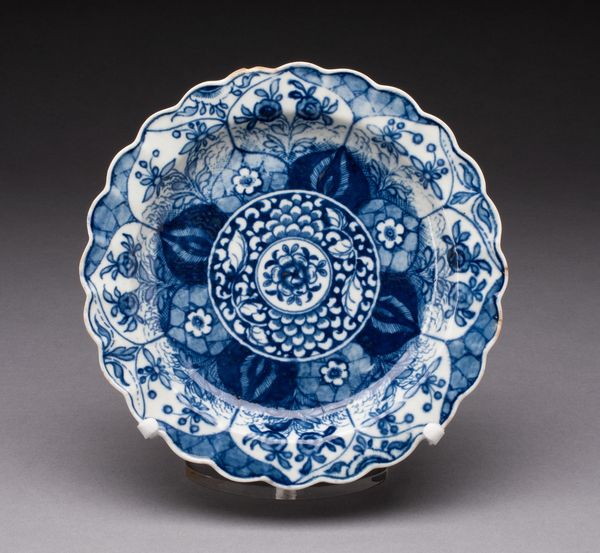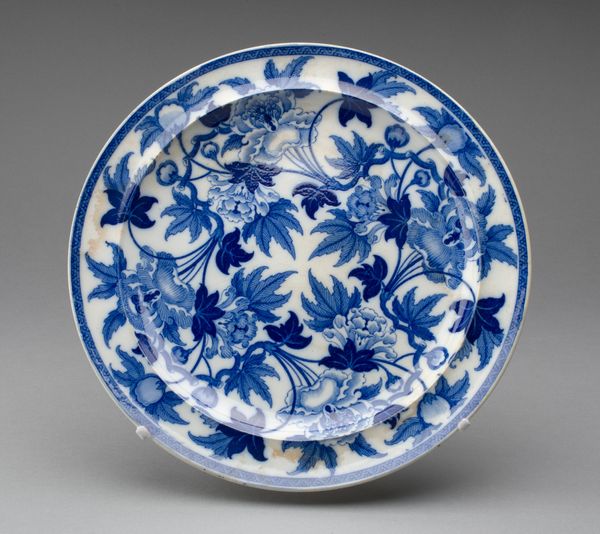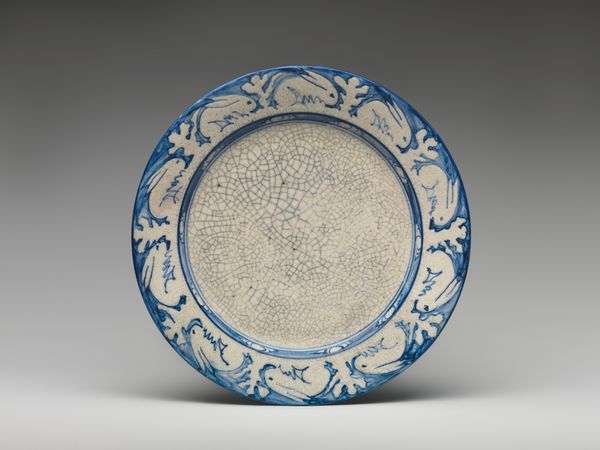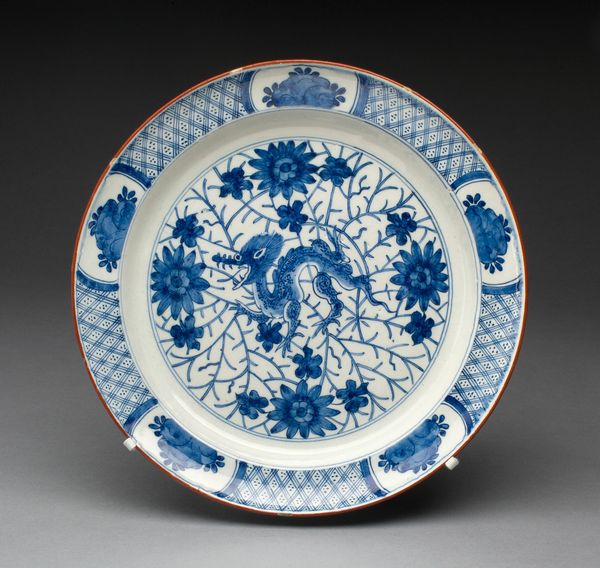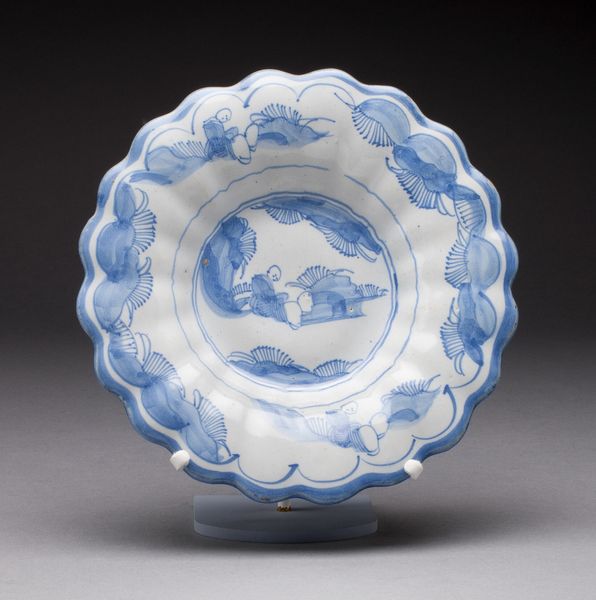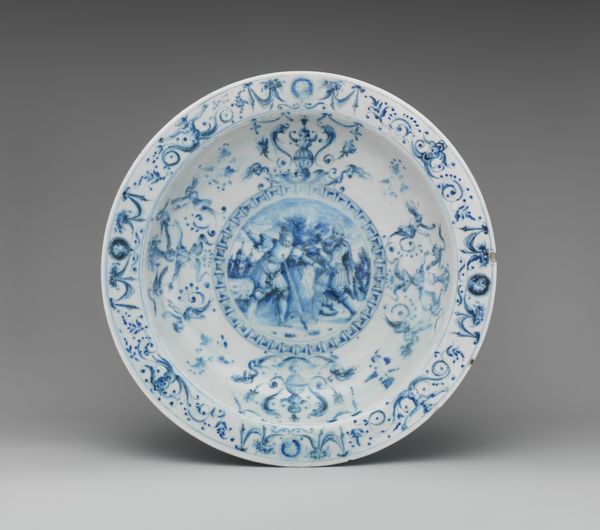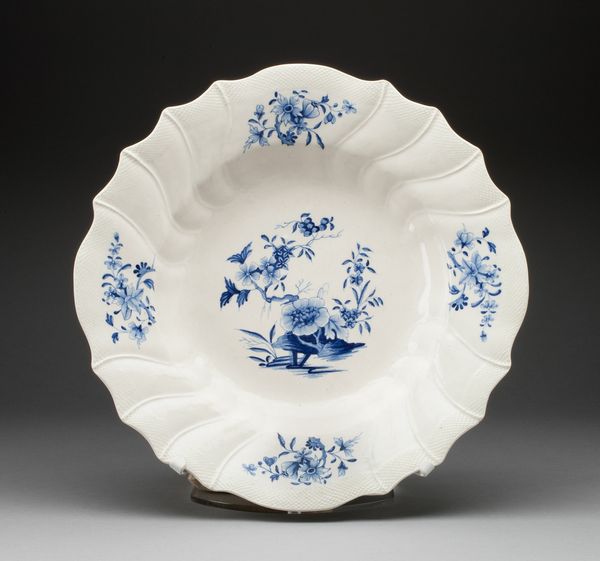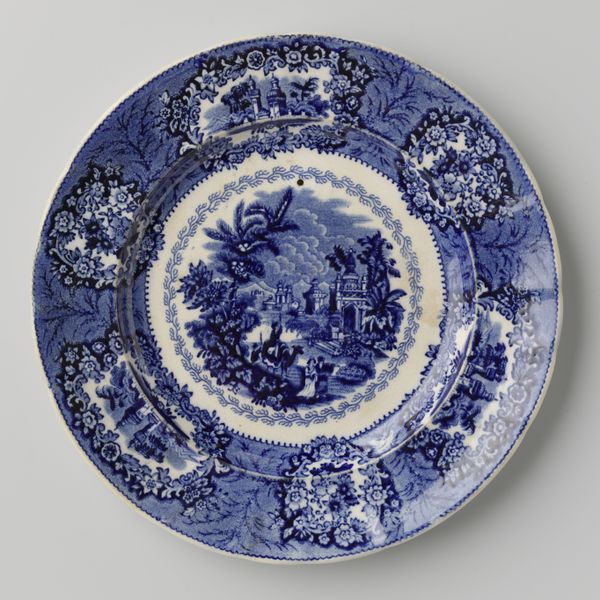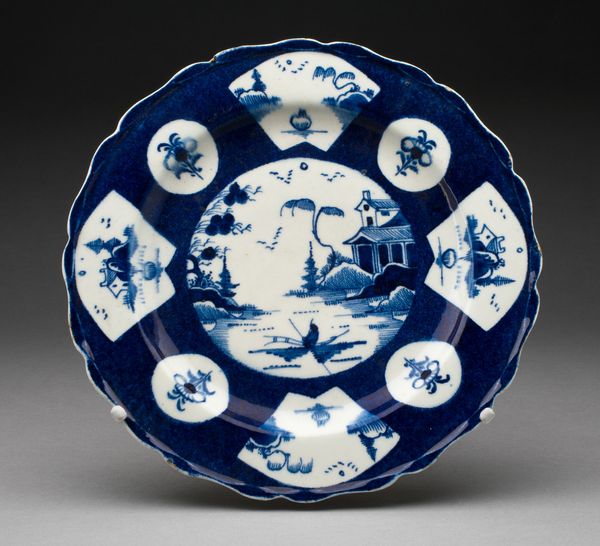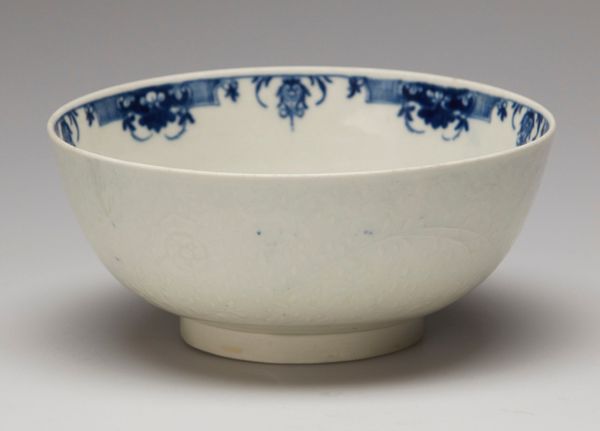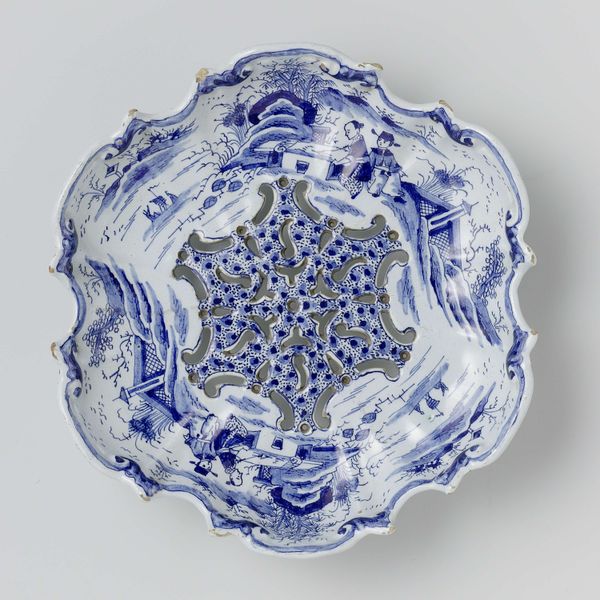
print, ceramic, porcelain, sculpture
# print
#
ceramic
#
porcelain
#
11_renaissance
#
sculpture
#
ceramic
#
decorative-art
#
italian-renaissance
Dimensions: Overall: 1 5/8 × 11 1/2 in. (4.1 × 29.2 cm)
Copyright: Public Domain
Editor: So this "Dish," created by the Medici Porcelain Manufactory between 1570 and 1592, is a delicate example of Italian Renaissance ceramic art, housed at the Met. The floral and faunal motifs in cobalt blue are mesmerizing, they evoke a sense of wealth, class, and perhaps cultural appropriation from Asian designs. What strikes you most about its historical and social implications? Curator: The choice of porcelain itself speaks volumes, especially when we consider the historical context. During the Renaissance, porcelain was highly coveted in Europe. Its association with luxury is tied directly to the dynamics of trade, colonialism, and the global flow of wealth. What do you think this access to coveted materials says about the Medici family? Editor: Well, it definitely places them at the center of a powerful economic and cultural network. I hadn't really considered the trade implications so directly before. Is there anything about the specific motifs, those stylized blue designs, that hints at something more? Curator: Absolutely. The stylized floral and fauna designs were certainly influenced by the import of Chinese porcelain. It’s important to consider the power dynamics inherent in artistic borrowing, though. Were the makers striving to emulate, compete, or perhaps even subvert the cultural dominance of the East? Did they have direct access to Eastern artisans? Who were these artisans? Their identities matter in this conversation! Editor: I see, so the object becomes not just beautiful, but a site where we can unpack these larger colonial dynamics, who has power and access. I’ll never look at pretty porcelain the same way. Thank you! Curator: Precisely! It encourages us to consider these beautiful objects not just for their aesthetic value but also for the complex intersectional stories they tell. It is an example of a historical object that tells modern-day tales.
Comments
No comments
Be the first to comment and join the conversation on the ultimate creative platform.
